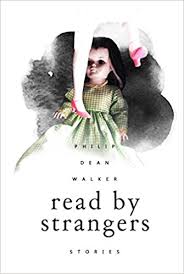2017 was another great year for gay male memoirs and journals, some by well-known writers like Daniel Mendelssohn, David Sedaris, and Armistead Maupin. Other, even better, books by unexpected writers like poet Kenny Fries memoir, In the Province of the Gods, and octogenarian British dramatist Alan Bennett (of The History Boys fame). First books by Chike Frankie Edozien, Parvez Sharma, Jose Antonio Rodriguez, Victor Corona, and Peter Gadjics show that gay writing is now global and historically significant in its concerns and also in its reach. In such a year, quieter books tend to get lost but that must not happen to Mark Abramson’s third memoir, Minnesota Boy.
I first heard of Abramson through San Francisco pals who were enchanted by his series of “Beach Reading” books, light, sexy novels. With his memoir Sex, Drugs and Disco, and especially with For My Brothers, Abramson took on more authorial and historic weight, writing with what one reader called a “you-were-there” quality, about one young gay man’s coming of age in San Francisco in the 1970s, documenting his life and experiences through the subsequent decades. These books were fascinating because handsome young Abramson found himself at the center of Baghdad By the Bay’s night life scene, first as a bartender and then as producer of fund raisers for AIDS and other causes. I spent enough time there then to know that his details are correct, his judgements balanced, and his take on people and events really quite measured.
This is crucial in memoirs if they are to have any use beyond the author’s ego-gratification. Abramson was able to do it because he had been a fresh-faced kid from the sticks, and pretty much everyone he encountered in that city was going out of their way to be extraordinary in a time and place when that required serious effort. His take on it all was to be appreciative rather than critical and so we got a pretty accurate picture of those heady days of the 1970’s of which many people believe, “if you can remember anything, you weren’t really there.” That wasn’t so for me and it’s not true for Abramson. We enjoyed and we remembered.
What sets Abramson apart from even my memoirs of the period is that he is utterly comfortable with being ordinary and with having fairly ordinary experiences — some of which do go haywire and unexpectedly stymie but ultimately delight him and his reader. This is more difficult to pull off than writing about the terrific and weird and wondrous. We come to trust Abramson’s voice and his instincts and his factual information in a way that I found difficult with some of the more literary writers mentioned in this review.
Minnesota Boy grew out of a request by his fatally ill mother, who said, “I think you should write a book about that trip you took to Europe when you were right out of high school, playing your saxophone with that band, you know?” Abramson adds, “It started out with that phone call from my mother on her death bed, or so she thought. It turned into a longer story about college, being different, trying to fit in, and slowly coming out, in more ways than one. Then it turned into a story about love and longing and finally leaving Minnesota for San Francisco.” He also admits, “This didn’t exactly turn out to be the book my mother wanted me to write. If she were here to read it, she would say she was embarrassed because it was so dirty. I would tell her she was not the target audience and we would both have a laugh.”
This is exactly what I would expect from a farm boy, who is a good student, and who is comfortable with his life, but who knows he has to expand it, first by going to Washington, D.C. and then to Europe. Surprise, surprise, he doesn’t fit in. But he doesn’t kvetch, he doesn’t kvell, and especially he doesn’t exaggerate. He intuits that experience is useful and his phone calls home to his parents confirm that. Meanwhile we get fascinating, yet trustworthy portraits of a world that is changing almost too quickly. This important because it is our history and although gay millennials seem as dim about the past as their straight coevals, it’s important that it be on record. It helps a lot that Abramson is always entertaining: I mean when is the last time you read about someone in a marching brass band?
Reviewed by Felice Picano





